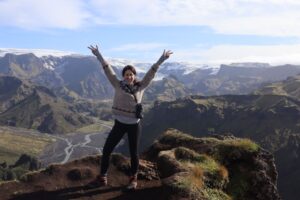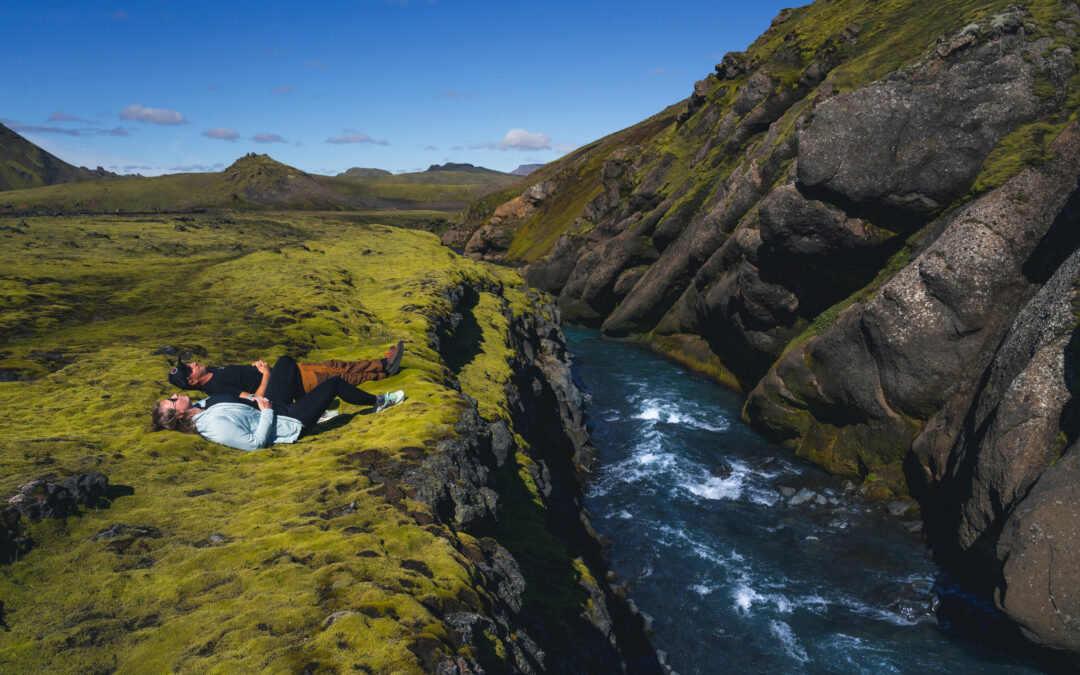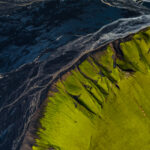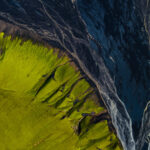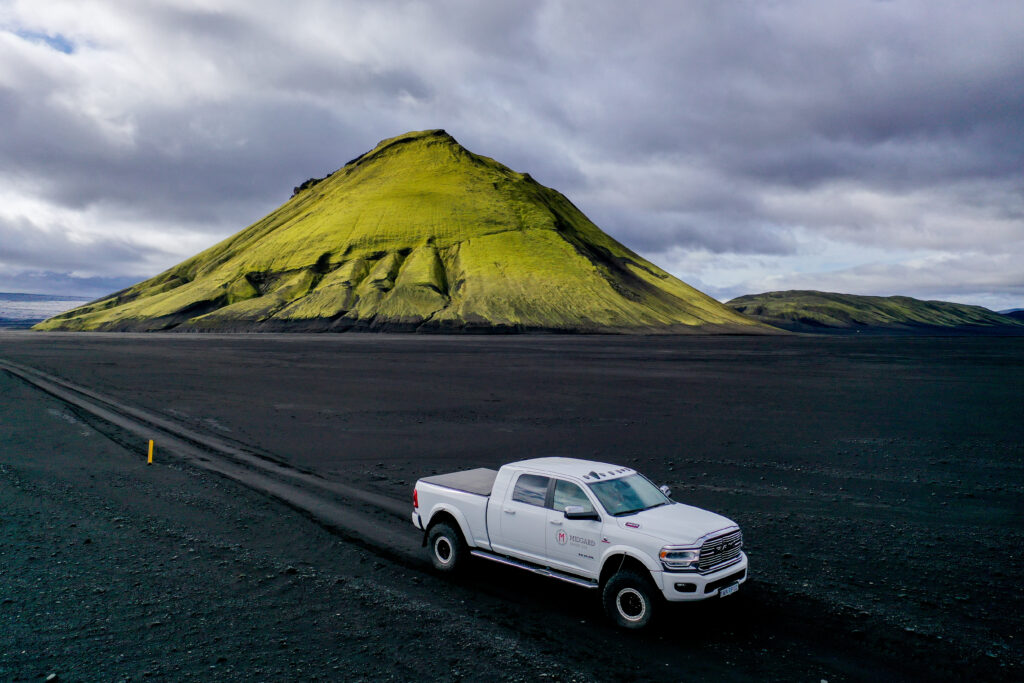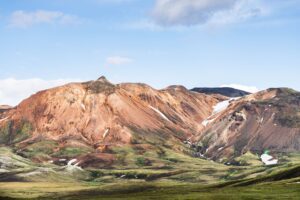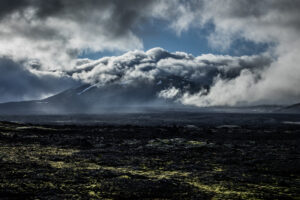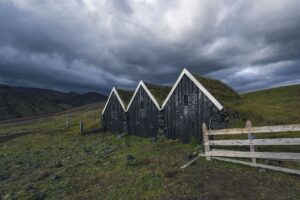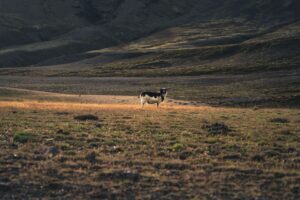Iceland’s Best Kept Secret- Fjallabak Nature Reserve.
Tucked inside Iceland’s Highlands region is Fjallabak Nature Reserve (Friðland að Fjallabaki). Sculpted by geothermal activity and glaciers, Fjallabak is where the land of fire and ice collide, creating a natural landscape masterpiece rich with dramatic texture and vibrant colors.
Virtually untouched by mainstay tourism, Fjallabak rewards visitors with an authentic highlands experience, away from the crowds and immersed in jaw-dropping landscapes.
The journey to Fjallabak is an adventure on its own on Iceland’s rugged F- -roads and unpaved tracks through Iceland’s rugged highlands region that often involve river crossings. The best way to explore Fjallabak is by guided tour, either by foot or super jeep. Read on to learn more about this lesser-known gem and why a Super Jeep highlands adventure should be on your Iceland itinerary!
Key Takeaways:
- Fjallabak Nature Reserve is part of the Icelandic highlands, an ethereal and remote place in Iceland’s central region. It is approximately 3 hours from Reykjavik and is home to the country’s most dramatic landscapes.
- Due to the rugged landscapes and unmaintained roads, getting there takes a lot of time. Fjallabak is only accessible by a 4 x 4 vehicle.
- The best ways to explore Fjallabak are by foot or a Super Jeep tour.
- Rich with volcanic landscapes, such as Iceland’s most powerful volcano and Katla and the mossy green Mælifell, Fjallabak is a stunning
- The reserve’s most iconic features include the colorful mountains bordering Landmannalaugur, the black sand lava fields, and the bright green mountain Mælifell, which is popularly photographed.
Fjallabak is a hidden gem, rich in wild and otherworldly scenery. Away from Iceland’s mainstays, it is genuinely an off-the-beaten-path destination like no other!

What is Fjallabak
The name Fjallabak translates in Icelandic to “back of the mountain,” referring to its location between two mountainous regions. Protected since 1979, Fjallabak consists of 47 hectares, bordered by two popular hiking destinations, Landmannalaugur and Þorsmörk, or “Thor’s Valley.”
Iceland’s most popular hiking route, the Laugurvegur Route, leads from Landmannalaugur through Fjallabak and ends in Þorsmörk. Every year, hundreds of hikers travel to Iceland to tackle this iconic trek, which, on average, takes 3 to 4 days to finish. Hikers utilize the huts along the route for overnight stays and replenishment.
Due to the unique contrast of landscapes formed from a plethora of volcanic and glacier activity, the preserve is a photographer´s and nature lover´s dream. The scenery in Fjallabak is nowhere else in Iceland, and it is not uncommon to witness everything from a bright green moss-covered volcano to a colorful mountain range on your visit!
Virtually untouched by human habituation and tourism, Fjallabak offers an authentic, off-the-beaten-path Icelandic experience rich with unique scenery and quiet tracks.
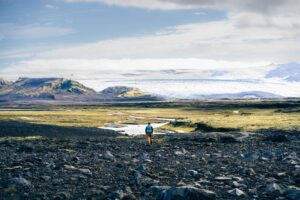
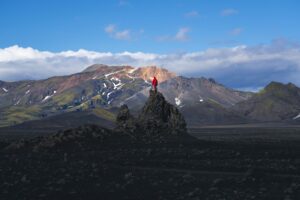
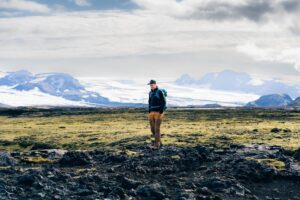
What makes Fjallabak so unique
As stated, Fjallabak is home to Iceland’s most unique and magnificent landscapes. From shining glaciers to unique rock formations, mountain masterpieces, and moon-like terrain, there is no shortage of wild scenery in Fjallabak. Fjallabak is so otherworldly that Neil Armstrong trained there for his first moon expedition!
It is one of the few places in Iceland where one can witness where fire meets ice as glaciers collide with volcanoes to create a one-of-a-kind viewing experience!
- The journey to. An adventure through Fjallabak begins during the journey to it, with a lively super jeep drive on Iceland’s lively F-roads. Along the way, the road twists and turns through the rugged Goðaland, the land of the gods—welcoming travelers with photo-worthy countryside. Due to the rugged landscapes and unpredictable river crossings, we recommend a guided tour as the safest and best way to visit Fjallabak. In this post, you will learn more about the benefits of a guided tour. Due to the lively landscapes and ever-changing glaciers, no day is the same in Fjallabak!
- Volcanoes If you want to see volcanoes, Fjallabak offers no shortage of them, including Mælifell, the green jewel of the preserve. You can also get a close and personal view of Katla, Iceland’s most powerful volcano!
- Otherworldly lava fields With volcanoes come the lava fields, vast open panoramas that seem to stretch on for eternity. Their rich black sand and craters lend to the dramatic landscape.
- Glacier views Fjallabak is one of the best locations to get an up close and personal view of Iceland’s most powerful volcano, Katla, which lies beneath the Myrdalsjökull glacier in Þorsmörk.
- Colorful scenery The scenery in Fjallabak is everchanging, and one thing that stands out is the colorful mountains that border the reserve and the vast black lava fields. This broad color palette is due to the minerals shaped by geothermal activity, such as obsidian and rhyolite, and the bright green moss that thrives there. Between the undulating landscapes, you will glimpse sparkling rivers and lakes, which pop with color like an oasis.
- Mount Mælifell Deep within the preserve, rising from a vast obsidian- lava field is Mount Mælifell, a mountain of historical and photographic significance. ‘Mælifell’ loosely translates to ‘measuring hill,’ suggesting its importance to travelers during Iceland’s settlement era. Due to its dramatic slope and color, the iconic Mælifell is a frequent stop for photographers, drone pilots, and guided tours. Mælifell, a queen of an otherworldly landscape kingdom, is a must-see and a glorious salute to Iceland’s majestic volcanoes.
- Untouched by mainstay tourism Due to the rough roads to reach Fjallabak and remote locations, the preserve is virtually untouched by tourism, affording visitors an authentic highlands experience away from the crowds.
- Foxes and flora Thriving within what seems like an impossible environment are a variety of flora, such as moss, lichen, and dwarf willows. Other residents of the preserve are the elusive Arctic fox and ptarmigan!
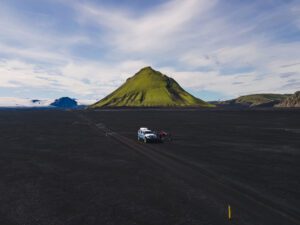
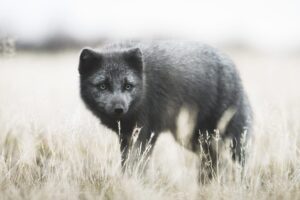
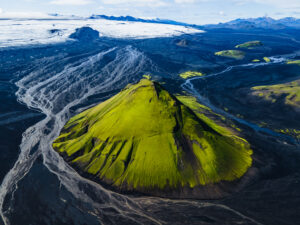
What to see in Fjallabak
- Mælifell is one of Iceland’s most iconic mountains. It’s easily recognized by its shape—an almost perfect conical volcano covered in bright green moss.
- Mælifellssandur is the black ash desert which Maelifell rises from and is a sight to behold on its own!
- Rauðibotn is a beautiful crater home to a striking emerald-green lake surrounded by red rocks.
- Álftavatn is a stunning lake known for its birdlife.
- Markafljótsgljúfur’s technicolor glacial river canyon is magnificent. The waterfalls nearby and the canyon’s stratified lava/ash layer walls create an ethereal scene.
- Hekla is one of Iceland’s most active volcanoes, with over 20 eruptions since 874.
- Einhyrningur is an iconic mountain easily recognized by its shape, resembling a sleeping unicorn with a horn jutting out.
- Landmannalaugar is a geothermal oasis with many breathtaking sites nearby, such as Hnausapollur Crater, Rauðaskál Crater, Dyngjuleið , and Dómadalur. It is also the start of one of Iceland´s most popular hiking routes, Lauguarvegur.
Getting to Fjallabak
Getting to Fjallabak is an adventure within itself. Located in Iceland’s central highland region, Fjallabak is a three-hour drive from Reykjavik, including a bumpy ride on unpaved tracks known as F-roads.
F-roads are unpaved and often non-maintained mountain roads that cut through Iceland’s highland region and are only accessible by 4 x 4. In the winter or late autumn, the highlands can see significant snowfall, making the F-roads unpassable and the region inaccessible.
A 4 x 4 is mandatory for Iceland’s F– -roads, but besides the rugged tracks, getting there often involves navigating several river crossings.
It is important to note that most rental companies do not cover damages to rental cars incurred by a river crossing, and rivers in Iceland can change by the hour due to the glacial melt this region experiences.
That is why we recommend a guided tour as a safe and enjoyable way to see Fjallabak. Attending a guided tour versus self-driving can make the difference between a thrilling adventure and a frustrating day!
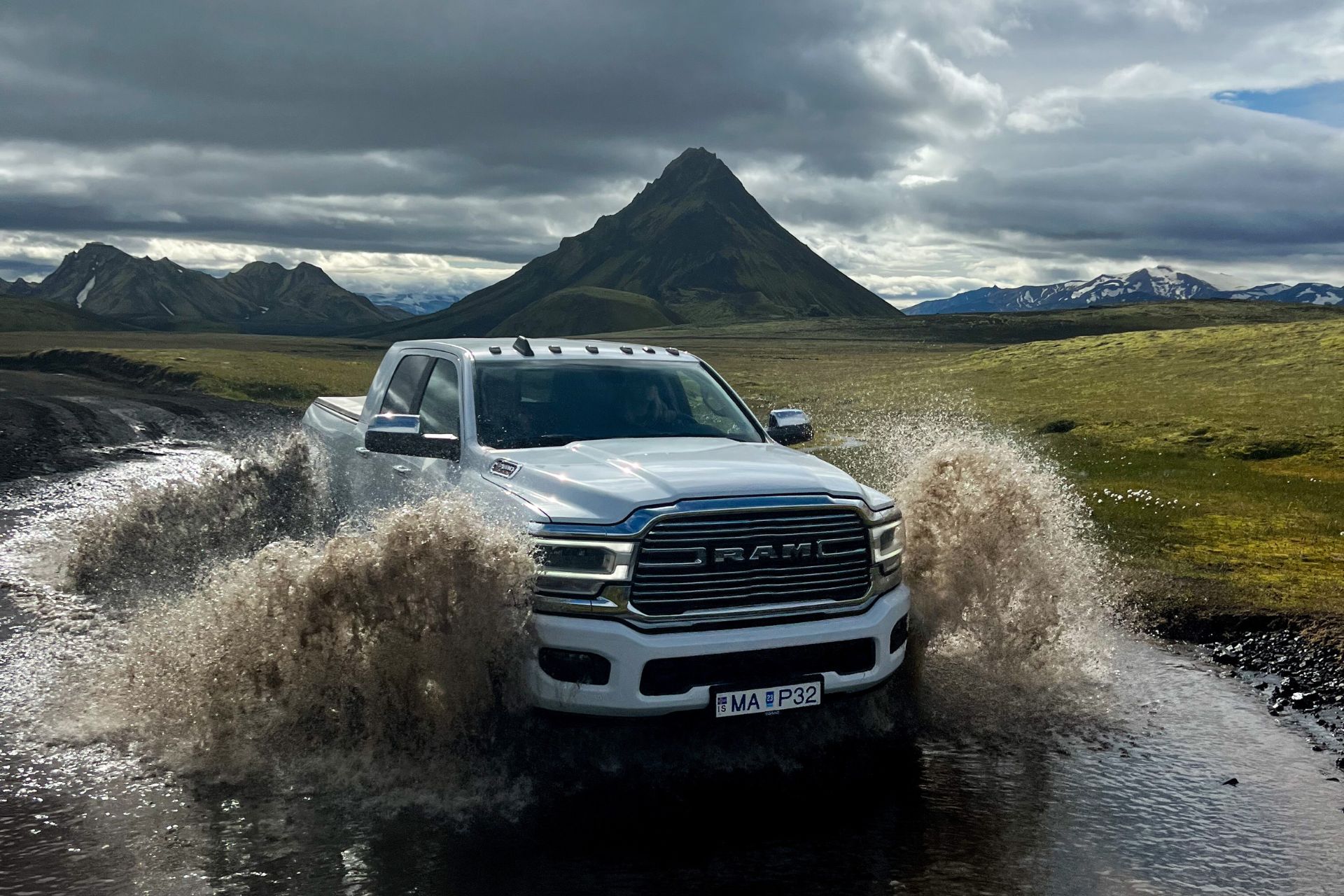
Best time of year to visit
Iceland’s Highland region can experience significant snowfall in the late autumn and winter, so it’s best to plan your visit during the milder months. In the Icelandic summer, landscapes come alive, bursting with color from blooming fauna, creating a one-of-a-kind viewing experience. Furthermore, summer offers visitors milder temperatures and better weather, making for a more comfortable and safer visit. The weather in Southern Iceland tends to be milder; however, conditions can change on a dime, so you should always be prepared with rain gear and warm layers.
Iceland’s winters are long, lasting from November until March and longer. Snow transforms our highland region into a winter wonderland, closing the F roads and thus access to the Highlands. The only exception is a Þorsmörk Super Jeep Tour such as this one.
In the spring, the temperatures rise, melting the ice from the nearby glaciers, and the landscape truly begins to come alive with change. Temperatures range from -1 C to 10 C (30 F to 50 F)
Iceland’s summer is from June to August, when the temperatures are at their mildest, ranging from 5 C to 15 C (41 F to 59 F). This is the season of the midnight sun, when we can see up to 23 hours of daylight in July, making it the perfect season for extended explorations!
Iceland’s landscapes burst with color in autumn from September to October, making the scenery even more stunning. The temperatures will drop as the season advances, and there can be snow and higher winds. Temperatures range from 0 C to 10 C (32 F to 50F)
Recommendations for your visit
The warmest month is July, with temperatures averaging 7- 8 Degrees Celsius. Like anywhere else in Iceland, the weather can change rapidly and unpredictably, so it’s always good to be prepared with warm layers and a rain jacket when exploring Iceland.
Here are some recommendations for your visit:
- Carry a day pack that includes a warm layer, such as a packable down jacket or wool sweater, gloves, a warm hat, a waterproof jacket, and pants.
- Dress in water-wicking layers to ensure you are comfortable in wet or dry conditions and temperature fluctuations that the Icelandic highlands are known for.
- Fjallabak is accessible by 4 x 4 only due to the rugged F roads through the preserve.
- Respect nature and practice no trace left behind. Fjallabak is a fragile treasure easily damaged by off-road driving and litter. Pack all trash and leave the environment as you found it. Take the Icelandic Pledge here.
Fjallabak guided tours
As stated, driving Iceland’s F-roads can be a challenge. But this is not the only reason a guided tour is an excellent way to experience Fjallabak. Guided tours allow time to converse with like-minded travelers, meet new people, and learn about our landscapes, local customs, and history.
Furthermore, attending a guided tour ensures all the essentials are taken care of, from the drive to the best scenery stops; an experienced guide will help you have a truly unforgettable day!
Benefits of a guided tour:
- Leave the driving to a professional. Participating in a guided tour means sitting back and relaxing while a guide takes care of the driving! This can make a world of difference when venturing into Iceland’s Highland region and onto unpaved roads.
- Experience stunning photography locations. Experienced guides know where to go to find the best spots for that unique landscape shot you are seeking. Furthermore, with years of experience, they know how to adjust plans if the weather turns or the conditions change, so you are still given the best chances.
- Engage with locals and other like-minded travelers. A guided tour allows you to meet and talk to locals and other like-minded travelers, which can enrich your visit! Guides are experts on Icelandic customs, landscapes, and history. Their passion for Iceland means they enjoy sharing all this information with visitors. When you attend a tour, you will experience the landscapes that attract thousands of visitors a year and learn more about Iceland’s rich heritage.
- Meet new friends. Whether you are a solo traveler, a family of four, or a couple, a guided tour is a great time to meet other like-minded travelers!
- A guaranteed safe experience: A journey to Iceland´s interior is a thrilling experience, but as stated, it means negotiating tricky unpaved roads and unpredictable weather patterns. Our[Al1] guides are well-equipped with the necessary safety equipment and years of experience navigating Iceland´s interior. They possess the knowledge required to adjust plans on the fly to ensure a safe and enjoyable journey, no matter the conditions!
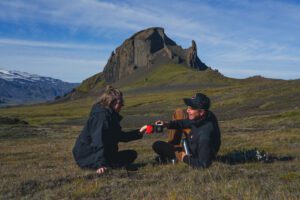
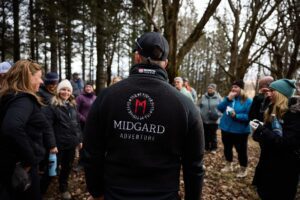
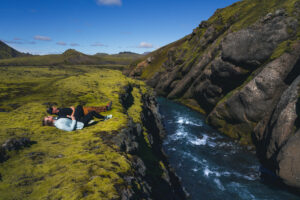
Ready to experience your Fjallabak adventure? Book a guided tour through this hidden gem and prepare for an unforgettable day!
Fjallabak Super Jeep Tour with Midgard Adventure
Get deep into one of Iceland’s most beautiful areas, Fjallabak Nature Reserve. This tour is for anyone who wants to get off the beaten track and experience remote volcanic wilderness.
There are so many exciting things in Fjallabak that it’s impossible to see them all in one day. Like all our tours, we don’t take the same route every trip. For each trip, we choose the best route depending on the road and weather conditions.
Please note: We want to emphasize that it’s impossible to see all the sites above in one day. We will choose the best route for the day based on weather conditions and ensure you have a wonderful time. Landmannalaugar is the most visited place in Fjallabak. If you want to be sure to go there, we have a specific Landmannalaugar Day Tour.
Choose this tour if you want to explore the highlands, experience remote wilderness, and go where most people don’t go!
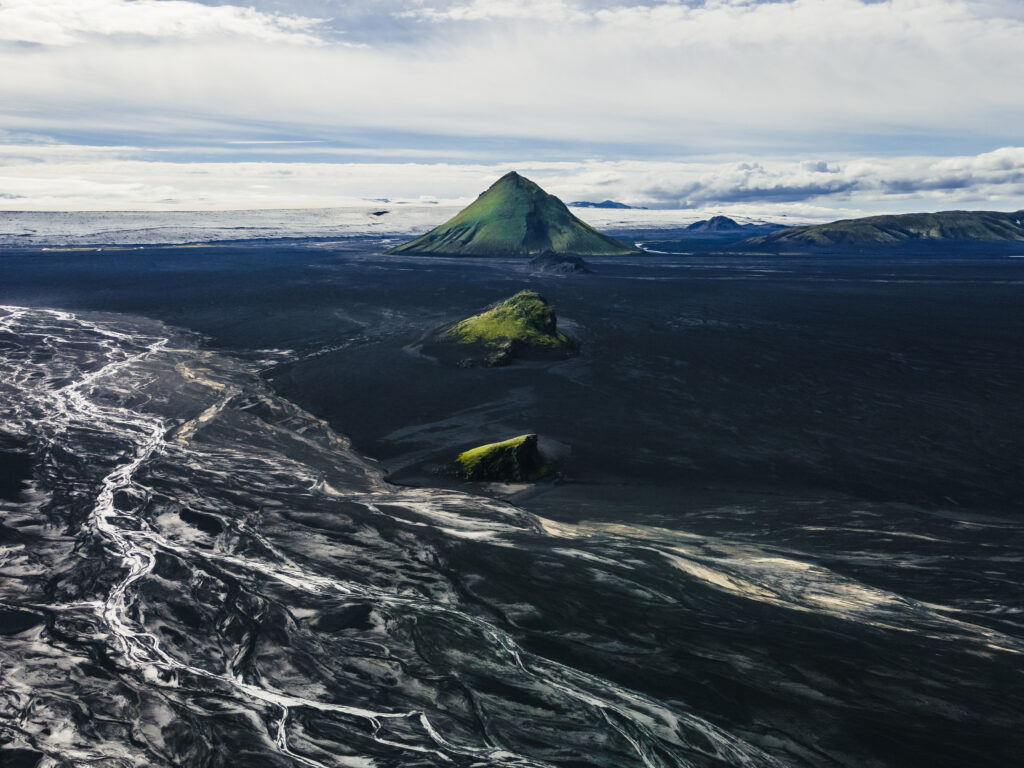
Book Midgard Adventure´s Fjallabak Super Jeep Tour here
